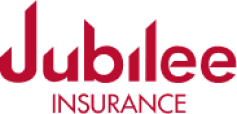Understanding Hypertension: Causes, Symptoms, and Effective Management Strategies
Hypertension, widely referred to as high blood pressure, is a common condition in which the long-term force of the blood against your blood vessel walls is high enough that it may eventually cause health problems, such as heart disease.
High blood pressure parameters and what they mean;
- 120/80 -Normal blood pressure
- 120-129/80: Elevated blood pressure
- 130-139/80-89: Stage 1 hypertension
- 140/ 90: Stage 2 High BP
- 180/120 and over Hypertension crisis
Symptoms to look out for;
Most people with high blood pressure have no symptoms, even if blood pressure readings reach dangerously high levels. Therefore, you can have blood pressure for years without having any symptoms.
A few people with high blood pressure may have:
- Headaches
- Shortness of breath
- Nosebleeds
There are two main types of high blood pressure.
1. Primary hypertension or essential hypertension.
Most adults have no identifiable cause of high blood pressure, and this type develops gradually over the years.
2. Secondary hypertension
An underlying issue causes this type of hypertension, which tends to appear suddenly. Conditions and medication that lead to secondary hypertension include:
- Kidney disease
- Thyroid problems
- The build-up of plaque in the blood vessel
- Certain tumors
- Drugs such as cocaine.
- Some pain relievers, birth control pills, and other prescribed drugs
What puts you at risk of getting high blood pressure:
- Age.
- Family history of high blood pressure.
- Obesity and being overweight.
- Lack of exercise.
- Tobacco or use of vaping.
- Too much salt.
- Drinking too much alcohol.
Management of Hypertension: The Do’s and Don’ts.
Prevention is key, and diet plays an important role in maintaining blood pressure within healthy limits.
The more fruits and vegetables one consume, the lower the hypertension risk.
Here are some measures to manage hypertension;
- Reduce salt intake.
- Keep fit! Physical exercise keeps your blood pressure in check.
- Take a diet low in fat. For example, you can steam vegetables instead of
frying, bake or grill foods instead of deep frying. Take low-fat milk instead of whole milk and
have skinless chicken. - Take fibre-rich foods: Peas, soybeans, oats, chia seeds, broccoli, sweet
potatoes, arrow roots, and almonds. - Reduce or remove alcohol from the diet – alcoholic beverages increase
high arterial pressure. - Quit tobacco– The chemicals in tobacco can damage the lining of your
artery walls.
When to see a doctor.
Blood pressure screening is an important part of general healthcare. People aged 40 and older and anyone above 18 years with a history of blood pressure should get checked every year.
Jubilee Health Insurance Limited
